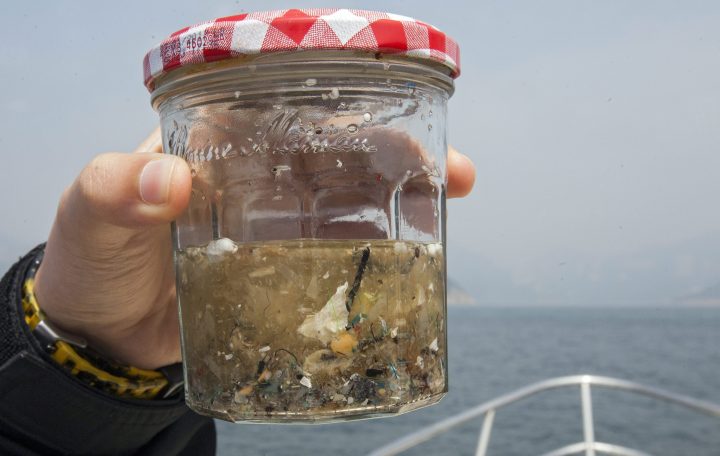Microplastics are “ubiquitous” in our tap water, bottled water, and environment, but there’s not much evidence that ingesting these particles is harmful to human health, according to the World Health Organization.

The organization, which released its first-ever report into the health impacts of microplastics in drinking water on Wednesday, concluded that there wasn’t very good scientific evidence on the health effects of the plastics, but based on what we know so far, not much to suggest they’re dangerous.
“The headline message is to reassure drinking water consumers around the world that based on this assessment, our assessment of the risk is that it is low,” said Bruce Gordon, coordinator in the Water, Sanitation and Hygiene office in the Department of Public Health at WHO.
Microplastics, which are tiny particles or fibres of plastic 5 mm or less in diameter, down to the microscopic level, have been detected in bottled water, drinking water, fish and sea salt in various studies.
A recent report from the University of Victoria estimated that the average American consumes between 126 and 142 tiny particles of plastic every day.
“They occur pretty much everywhere that we look,” said Garth Covernton, a PhD candidate in biology at the University of Victoria, and one of the co-authors of that study. “That means that anything that enters our body is potentially going to contain microplastics.”
They’re in the air we’re breathing, the food we’re eating and the water we’re drinking, he said.
Need for more research
The WHO examined whether particles pass through our systems after we ingest them or build up in our bodies, whether they could harbour bacteria that they then bring into our bodies, and whether they contain chemicals that could also cause us harm.
After reviewing studies on all these topics, they decided that microplastics presented a relatively low risk to health.
WATCH: Sargasso sea turtles threatened by high levels of microplastic
However, both the WHO and Covernton note that most of the studies aren’t very strong or are hard to apply to the real world, and it’s hard to draw firm conclusions from them at this point.
“They’re kind of concluding that there is no risk based on the fact that we don’t have evidence for it,” Convernton said. “But I think that the lack of evidence isn’t necessarily because the risk isn’t there, but that we are missing really good studies looking at that.”
“I think they are a little bit hasty to conclude that there is no concern.”
With that said, though, he’s not especially worried himself. “It’s not necessarily something that keeps me up at night.”
WATCH: B.C. study says humans unknowingly consume microplastics

While the WHO says that current research doesn’t show much evidence of harm, they are encouraging further study into microplastics and health. First, they noted a “very low number of studies” on the amount of microplastics in drinking water and suggested there should also be more research into where these plastics come from.
“These studies need to be well-designed, quality-controlled and provide information so that we know the number of particles that have been detected, the sizes of these particles, the shapes, as well as the chemical composition,” said Jennifer De France, a technical officer in the Water, Sanitation and Hygiene office of WHO’s Department of Public Health.
The WHO report noted that the size of particles detected in a given study often depended on how fine a filter was used to trap them, leading to extremely variable results.
They also want more research on the health impacts of microplastics that we consume in our food, in the air and other ways. The WHO has already started a research review into other ways we consume plastic, the organization said at a press conference Wednesday.
WATCH: The effect of microplastic in Toronto Waterways

Plastic particles have been noticed by scientists for decades, but detailed study only began around 2004, Covernton said, so it’s a relatively new area of research.
Despite saying that the health risks are low, the WHO is calling on countries to cut down on plastic waste — more for environmental reasons than health.
“Irrespective of whether there are any risks to human health from ingestion of microplastics in drinking-water, there is a need to improve management of plastics and reduce plastic pollution to protect the environment and human well-being,” reads the report.
“Poorly managed plastic can contribute to sanitation-related risks and air pollution, and impact tourism and overall quality of life.”
For now, they say, there are much worse things than plastic in our water. “We know now from our WHO data and UNICEF data that two billion people drink water currently that is fecally contaminated and that causes almost one million deaths per year,” Gordon said.
“That has got to be the focus of regulators around the world and we don’t recommend that regulators be monitoring for microplastics routinely.”


Comments